Old Dutch Tour 2022
October 16
Apeldoorn
The oldest known reference to Apeldoorn, then called Appoldro, dates from the 8th century. Close by is the favourite country-seat of the royal family of the Netherlands called the palace het Nieuwe Loo (now Het Loo).





Our first stop in Apeldoorn was the Palais Het Loo. The symmetrical Dutch Baroque building was built between 1684 and 1686 for stadtholder-king William III and his consort Princess Mary. The palace then remained a summer-residence of the House of Orange-Nassau until the death of Queen Wilhelmina in 1962. In 1960 Queen Wilhelmina had declared that when she died the private estate surrounding the palace would go to the State.
































After spending so much time wandering the gardens, it was time to enter the palace.








Guess which part of the palace the King decorated?








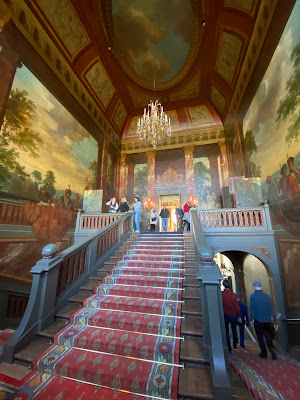

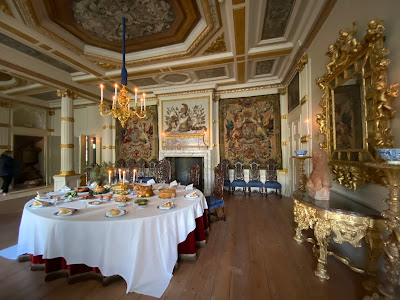












Those are all decorated with shells, the little fountain and the walls
The views from the rooftop gave an a-maz-ing perspective on how large the surrounding gardens were.







Back outside and into the gardens.





There was even a transportation museum on the grounds, lucky me!












The carriages were nice, but the cars were very rare.

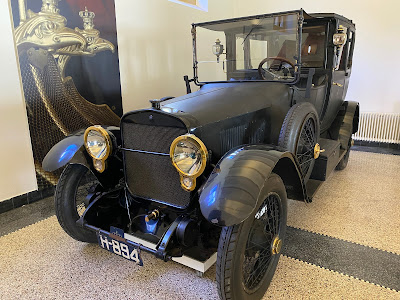








Some day this part of the palace will look nice too
The Hotel Het Loo was conveniently located a short walk from the palace, so it would be a good base for 1 night.


Deventer
Afie was feeling a little drained after all the walking and stairs at the palace, so Norine and I took the car and went to check out the nearby town of Deventer. Sadly,we came on a Sunday, and apparently everything is closed on Sundays, most of the shops, and even entrance to the churches. Who closes a church on a Sunday?
The first thing you notice, after finally finding somewhere to park, is the Grote of Lebuïnuskerk. The Great Church is the main church building of Deventer, built between 1450 and 1525.







Apparently an exhibition on CSI techniques, notice the fingerprints?




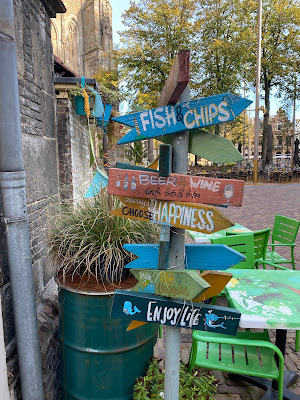


















If you read our 'Budapest to Amsterdam' blog, you would now I have an unhealthy fascination with shop signs in old cities.







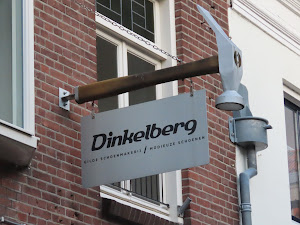



I mean, come on, how do you not love these signs?


Museum de Waag
We took a little wander along the canal, and away from the town square past some beautiful old houses/mansions. About 30 minutes later we realized that this place has no WC facilities, and made for an uncomfortable walk back until we finally found a Subway that was open, the only fast food in the whole town.













Now that we know the story behind the stumble stones, we have to take a pause whenever we encounter them.
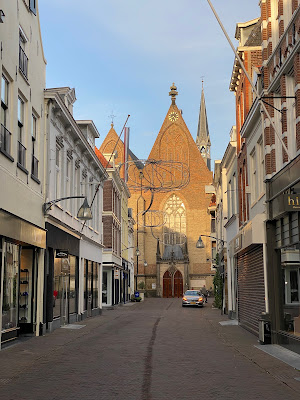


The Broederenkerk , officially the Roman Catholic Sint-Lebuïnuskerk , built between 1335 and 1338
As we are heading back to the car to meet Afie for dinner, the lights in this cute little town start coming on. It's time to leave, with one brief stop to take a photo of another windmill.



October 17
Before we got underway we made a breakfast stop at this unique little family owned creperie. Paviljoen Amalia is known for their traditionally baked pancakes and poffertjes, and has been doing it for over 30 years. It was a husband and wife venture, with all his collectibles on display, but since he has passed she took over, and does all the cooking and serving. Then sits and knits while we are eating. She was so friendly and the ladies all have a good chat. The pancakes were a-maz-ing too.





Arnhem
With our bellies full, we drove to Arnhem, and the Openluchtmuseum. The Netherlands Open Air Museum features antique houses, farms, and factories from different parts of the Netherlands. It is a national museum focusing on the culture associated with the everyday lives of ordinary people. It links to key aspects of Dutch history, including the Dutch East India Company, as well as the First World War, slavery, and child labour. The park was established in 1912 and open to the public in July 1918.

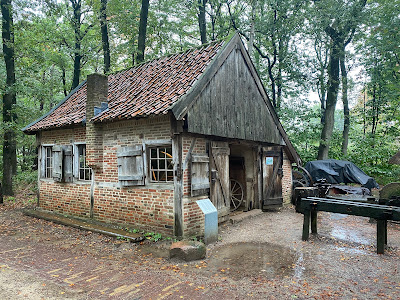

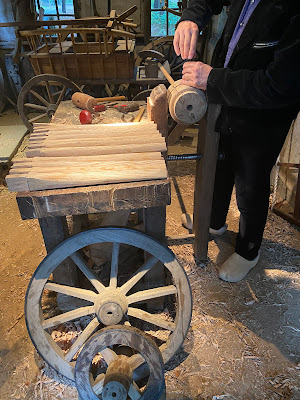









This crazy little green structure was a tuberculosis room, it was designed to rotate and would always face the sun, to effectively bake the patient in warmth and sunlight as a possible cure.






Our windmill fetish was partially filled today, as they had many different types of mills from around the country.
























That's a profiterole baking pan, the small donut like treats can be served with just icing sugar or Bossche Bollen style, which are essentially giant Dutch profiteroles filled with sweetened whipped cream and covered in a rich chocolate glaze. While they originate from Den Bosch, you can find them throughout the Netherlands


The heritage tram line opened in the museum in 1996. The line is 1750 m long, standard gauge. It has classic electric trams from Amsterdam, Arnhem, Rotterdam, and The Hague. A notable train of the museum's line is a replica of an Arnhem tram from 1929.







There was a considerable sized display about the great migration of Dutch citizens to Canada, whatever you could fit in that box is what you could take. I don't think my Grandfather brought over that much stuff.









Sadly the brewery was closed today as they didn't have enough volunteers.










The last portion of the museum represented what it was like for people fleeing and fighting during World War 1


From a very damp day at the Openluchtmuseum, we headed over to our new hotel in Arnhem, it was just like the old hotel, except the view was a little different, and we were in a different city.



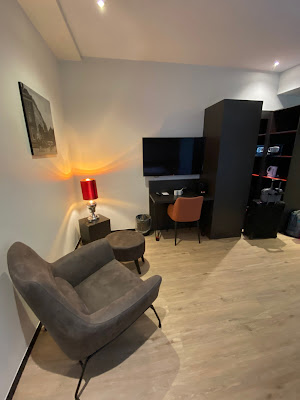
We found this little Italian restaurant called Ristorante Dell'Etna just around the corner from our hotel, the waitress was awesome, and the food was a-maz-ing!


After dinner, Afie headed back to her room, and Norine and I wandered around the town square at night.



St Eusebius Church, dating back to 1452




You just never know what you will find wandering the streets. We got some drink and snack supplies for the road and headed back to the room. Surely there must be some great Hallmark movie in English we could watch.


October 18
In the morning we packed our bags and heated to the ominously named town of Muiderberg.


